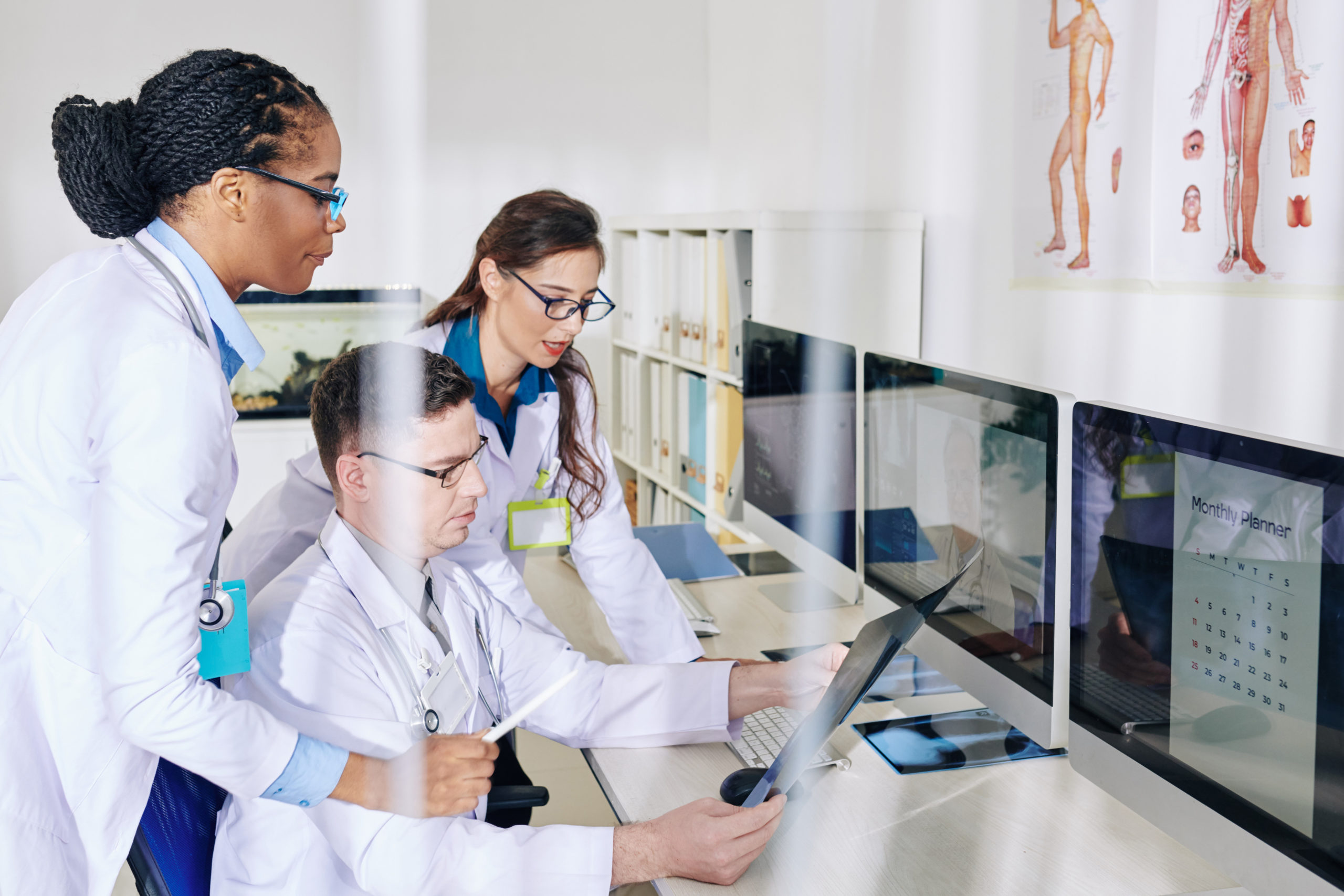If you’re studying to become a medical doctor, you’ll need to take USMLE Step 1 before you start your clinical rotations and USMLE Step 2 CK before you receive your medical license. You’ve likely heard of these exams. But you might not be as familiar with the osteopathic equivalent to USMLE: the COMLEX exams. We’re talking all about this series of exams in today’s post. So, if you want to become an osteopathic physician, keep reading to learn all about the tests you’ll need to take.
COMLEX Level 1
You’ll take Level 1 when you’ve finished “Level 1” of osteopathic medical school: your pre-clinical courses. This exam is all about everything you’ve learned in your medical school coursework. It’s designed to test your knowledge and understanding in clinical-based settings through questions that test your ability to solve problems and determine solutions for certain situations. It evaluates your readiness for clerkships. The following subjects are included in Level 1:
- Anatomy
- Behavioral Science
- Microbiology
- Biochemistry
- Osteopathic principles
- Physiology
- Pathology
- Pharmacology
Here’s an example of a question you could be asked. This sample is taken from the National Board of Osteopathic Medical Examiners website.
“A 22-year-old male marathon runner presents to the office with the complaint of right-sided rib pain when he runs long distances. Physical examination reveals normal heart and lung findings and an exhalation dysfunction at ribs 4-5 on the right. Which of the following muscles or muscle groups will be most useful in correcting this dysfunction utilizing a direct method?
A. anterior scalene
B. latissimus dorsi
C. pectoralis minor
D. quadratus lumborum
E. serratus anterior”
Want more sample questions? Take the practice exam on the NBOME website.
There are two, four-hour exams for Level 1. You’ll answer 352 questions. The exam is taken in one day. Once you’ve passed Level 1, you may begin your clerkships. After your first year of clerkships, you’ll take Level 2.
COMLEX Level 2 Cognitive Evaluation (CE)
While we compared the COMLEX exams to USMLE earlier, this is where they differ. You don’t take USMLE Step 2 CK until after your clerkships are over. They’re taken between clerkships and residency to prove your readiness to advance to the next level of patient care.
On the other hand, osteopathic physicians-in-training take Level 2 after you’ve completed your first year of core clinical rotations. Level 2 focuses on clinical knowledge, diagnosis and management. It mentally places you in a licensed clinician’s shoes. This is intentional and important. You’re only a medical school student for four years. You’ll be a doctor for the rest of your career. Becoming comfortable in a doctor’s mindset is essential for your long-term success.
You’ll be tested on the following subjects:
- Emergency Medicine
- Family Medicine
- Internal Medicine
- Obstetrics / Gynecology
- Osteopathic Principles and Practices
- Pediatrics
- Psychiatry
- Surgery
Here’s a sample question:
“A 27-year-old male who is an intravenous drug user presents to the office with the complaints of intermittent fever, chills, arthralgia, weakness, and chest pain for the past 2 weeks. Vital signs reveal:
Temperature 38.5°C (101.3°F)
Blood pressure 105/60 mmHg
Heart rate 96/min
He has a systolic murmur along the left lower sternal border that is loudest during inspiration. Tender nodules on the finger pads and track marks in the left antecubital fossa are also present. The most likely organism to be found on blood culture is
A. Candida albicans
B. Enterococcus faecalis
C. Pseudomonas aeruginosa
D. Staphylococcus aureus
E. Streptococcus viridans”
More sample questions for Level 2 CE are available.
This exam consists of two, four-hour exams that are taken in one day. There are 352 questions. This is a computer-based exam. Passing Level 2 CE shows your readiness to work with patients in supervised settings.
COMLEX Level 2 Performance Evaluation (PE)
The Performance Evaluation part of Level 2 is just as important as the Cognitive Evaluation part. While CE tested your ability to think like a clinician, PE tests your ability to perform/act like one. You’ll review a patient’s history and conduct a physical examination. After quickly reviewing your findings, you’ll diagnose your patient and work with them to create a treatment plan.
The PE experience will be simulated for you with standardized patients and experiences. In addition to properly diagnosing the patient, you’ll be expected to maintain the highest levels of professionalism, including a welcoming bedside manner, interpersonal skills and social interactions.
You’ll work with 12 different patients. You’ll have 14 minutes with each patient and nine minutes to document your visit with each patient.
You’ll take exams in two domains: Humanistic and Biomedical / Biomechanical.
Humanistic Domain:
- Physician-Patient Communication
- Interpersonal Skills
- Professionalism
Biomedical / Biomechanical Domain:
- Medical History: Taking and Physical Examination Skills
- Osteopathic Principles and Osteopathic Manipulative Treatment
- Documentation Skills
There are no sample questions for PE, but there are tools to help you prepare.
COMLEX Level 3
You’ll take Level 3 near the end of your residency. Level 3 is the final COMLEX exam and is designed to test your ability to practice medicine as a licensed doctor of osteopathic medicine. The exam covers the “foundational competency domains” that general physicians need to master to effectively treat patients. The exam covers the following clinical disciplines:
- Emergency Medicine
- Family Medicine
- Internal Medicine
- Obstetrics / Gynecology
- Osteopathic Principles and Practices
- Pediatrics
- Psychiatry
- Surgery
Here’s a sample question:
“A 66-year-old male presents to the office for a follow-up evaluation of an abdominal aortic aneurysm. An ultrasound performed 1 year ago revealed an aneurysm with a diameter of 3.75 cm. Past surgical history is negative. He says that his parents died in a motor vehicle collision when they were in their 40s. He smokes cigarettes and has a 10 pack-year history. Vital signs reveal:
Blood pressure 150/90 mmHg
Heart rate 72/min
Respiratory rate 16/min
Physical examination findings are normal. Repeat ultrasonography is performed in the office today. Which of the following ultrasound findings would indicate a need for surgical repair in this patient?
A. increase in aneurysm size by 0.2 cm
B. increase in aneurysm size by 0.5 cm
C. increase in aneurysm size by 1.0 cm
D. overall aneurysm size of 4.0 cm
E. overall aneurysm size of 4.5 cm”
This final exam is taken on a computer over the course of two days. There are four sessions for the exam, with each one lasting for three hours and 30 minutes. You’ll answer 420 multiple choice questions and 26 clinical decision-making questions. Each clinical decision-making question involves two to four sub-questions. Some questions will be multiple choice with the “best option” being the correct choice. Other questions will require a short answer.
Upon passing Level 3, you’ll be ready to practice medicine without supervision.
Conclusion
We hope this guide helps you prepare for the COMLEX exam. Be sure to utilize all the resources on the NBOME website. Taking the practice tests and reviewing all the information NBOME provides will help you prepare. It will also give you a boost of self-confidence, which is essential when taking exams that allow you to proceed to the next level of practicing medicine.
International Medical Aid is here for you as you navigate your way to becoming a licensed osteopathic physician. Should you need any help along the way, please don’t hesitate to reach out to us. We offer medical school admissions consulting and would be happy to answer your questions about COMLEX.
Citation for sample test questions: National Board of Osteopathic Medical Examiners




